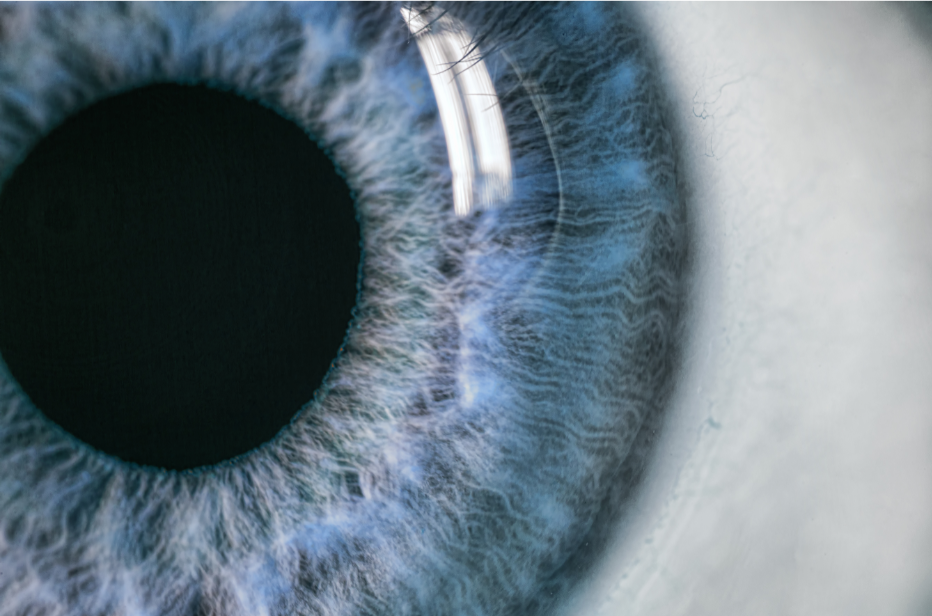Surprising facts about human vision
The eye is the most important sensory organ in the human body, providing 90% of the information we receive about the world around us. The eye is a complex optical device whose main task is to transmit images via the optic nerve to the brain for further processing. It also has a unique structure and, as a human organ, is not yet fully understood.
But scientists have unlocked many of its secrets, and specialists perform operations of unimaginable complexity.
30 facts about human vision:
1. When people look at a person for whom they feel strong empathy, their pupils dilate by almost 50 per cent;
2. The human eye can distinguish about 500 shades of grey;
3. Each eye contains 107 million light-sensitive cells;
4. The eye focuses on about 50 objects per second;
5. Blinking can cause the eye to focus on about 100 objects per second.
5. Blinking takes about 100-150 milliseconds and can occur 5 times per second;
6. The eye processes about 36,000 pieces of information per hour;
7. It is impossible to sneeze involuntarily with your eyes open;
8. Shark corneas are used by surgeons as donor material for operations because they are as similar as possible to the cornea of the human eye;
9. About 10,000 years ago, when the inhabitants of the Black Sea region had a genetic mutation that led to the appearance of blue eyes, all human eyes in the world were brown;
10. Brown eyes are actually blue, but there is brown pigment underneath. Laser surgery is available to permanently change the colour of the eye from brown to blue.
11. One in twelve men is colour blind;
12. All newborn babies are colour blind;
13. Babies’ eyes do not produce tears until they are 6-8 weeks old;
14. The human eye can only distinguish three colours: red, blue and green. All other colours are combinations of these;
15. The Maya found strabismus attractive and tried to give it to their children;

17. Our eyes remain the same size as when we were born, but our ears and nose continue to grow;
18. Our pupils are only 1/6th the size of our eyes;
18. The average person sees about 24 million different images in their lifetime;
19. A person’s fingerprint has 40 features and the iris has 256 features;
20. Schizophrenia can be detected with 98.3% accuracy using a simple eye movement test.
21. People blink an average of 17 times a minute, 14,280 times a day and 5.2 million times a year;
22. The optimum time to make eye contact with a new person is four seconds. This time is needed to determine eye colour;
23. Images sent to the brain are actually reversed;
24. The eyes use about 65% of the brain’s resources.
25. “Wobbly” particles that appear in the visual field are called “floating floaters”. These are shadows cast on the retina by small bundles of proteins in the eye;
26. Dogs are the only animals that look for visual cues in other people’s eyes, and they only do this when interacting with humans;
27. The human eye can only make smooth (not discontinuous) movements when tracking a moving object; 27.
28. People do not see “with their eyes” but with their brains. In many cases, blurred or poor vision is not caused by an abnormality of the eye, but by problems in the visual cortex of the brain;
29. Some people are born with eyes of different colours. This is called heterochromia;
30. Type 2 diabetes can often be seen during an eye test as small bleeding from blood vessels in the back of the eye. This is another reason to have your eyes checked regularly;
31. People with blue eyes see better in the dark than people with brown eyes.
Abnormalities in human vision
Dead zones
A serious anomaly in human vision is the so-called dead zone. When the eyes focus on a nearby object, the first object suddenly starts to ‘disappear’. Of course, it doesn’t actually disappear anywhere. This is probably why road accidents are so common.
Blind spots
In the eye of a healthy person, there is an area of the retina that does not receive light, called the blind spot. The blind spots are in different places in each eye, but they are symmetrical. This, and the fact that the brain compensates for the perceived image, explains why blind spots are not visible when both eyes are affected.
The figure below shows a red cross and a blue dot. Open the image to full screen. Close your left eye and look only at the cross with your right eye. The dot is also visible with side vision. Slowly approach the monitor. Eventually, the blue dot will disappear completely!
Interesting fact: the octopus does not have a blind spot in its eye. This creature evolved separately from other vertebrates.
Dominant eye
Humans have a dominant eye, and the dominant eye has a wider field of vision. To find your dominant eye, do the following Put the palms of your hands together to form a ‘triangle’. Choose an object one metre away and look at it through this triangle. Close your right eye first, then your left. Your dominant eye will see the object completely, without shifting, while the other eye will see only part of the object.
Interesting fact: 80% of people in the world are right-handed.
The illusion of colour receptors
The human eye has three types of receptors that detect the three primary colours – red, green and blue. If we look at a coloured image for a long time, the receptors get tired. If the same image is suddenly changed to black and white, the receptors do not have time to adapt and we are given the illusion that we are looking at a colour image.
Blood vessels in the eye
This experiment requires a small piece of paper with a hole in it. Place the paper in front of a blank screen. Look directly through the hole and shake the paper slightly. After a while you will see a dark grid of lines, similar to the lines on tree leaves.
Interestingly, about 2% of women have a rare genetic mutation that allows them to have extra cones in their retina. This enables them to see 100 million colours.
The Ganzfeld procedure
In this experiment, you turn on a TV or radio with white noise or interference, place half a table tennis ball over your eyes, assume a horizontal position and look at the light. After a while, this method works and the person begins to have vivid and complex hallucinations. They may see horses or other animals and even talk to inanimate relatives. It should be noted, however, that this experiment is only of interest to people with a well-developed imagination.



